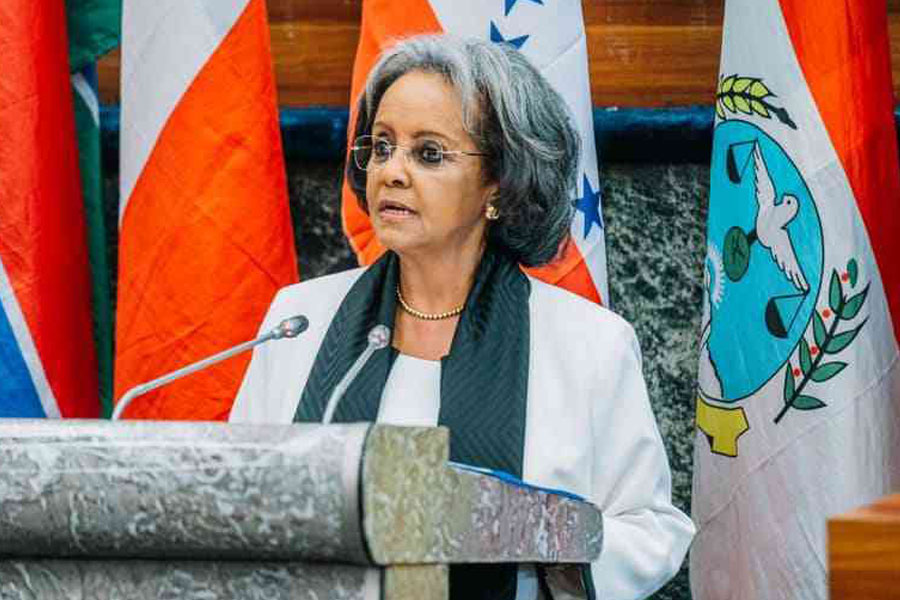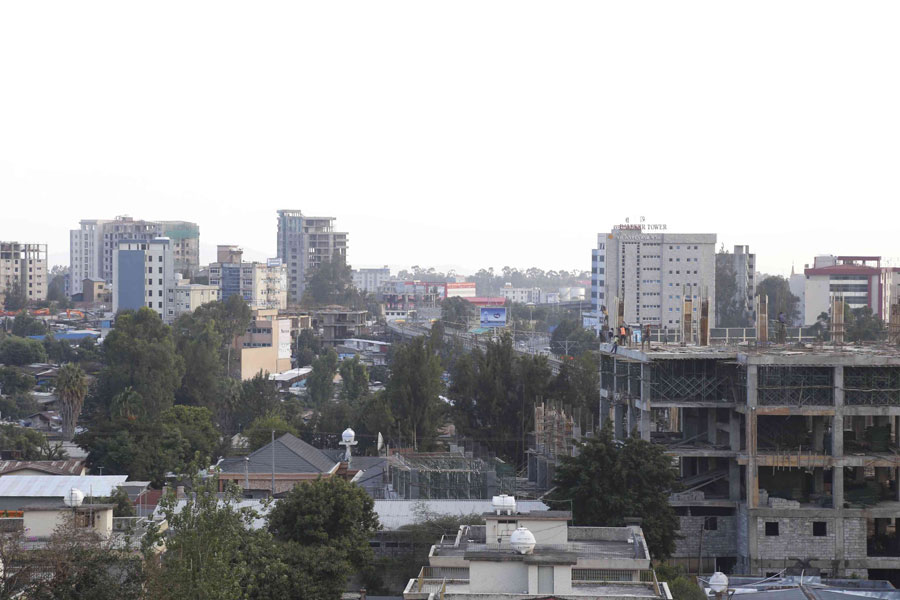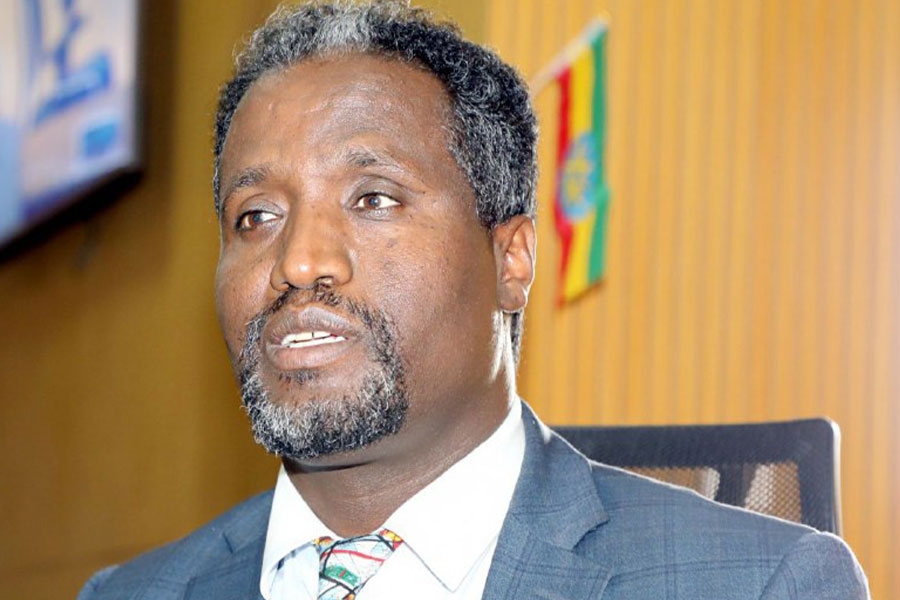
Commentaries | Jul 09,2022
Apr 15 , 2023.
The International Monetary Fund (IMF) released its annual outlook on the global economy last week, forecasting an optimistic prospect for Ethiopia's economy next year. Ethiopia is expected to have the fourth-largest growing GDP in Africa, following Senegal, DR Congo, and Cote d'Ivoire.
According to the IMF, Ethiopia's GDP will grow by slightly over six percent this year, almost double the average for sub-Saharan Africa. The growth is predicted to remain steady next year, while inflation may drop to 23pc, and the balance of deficit could decline to 5.5pc, falling by seven percentage points.
The IMF team, led by Alvaro Piris, concluded a 10-day visit to Addis Abeba with an unusually brief statement, which offered scant information on Ethiopia's macroeconomic health. Describing the Ethiopian government's economic reform agenda as "ambitious," Piris acknowledged that discussions were ongoing and promised to continue talks during the Spring Meeting in Washington.
Ethiopian policymakers, including Governor Mamo Miheretu, Finance Minister Ahmed Shedie, and Teklewold Atnafu, the Prime Minister's macroeconomic advisor, attended the spring joint meeting of the IMF and the World Bank in Washington DC last week. However, the delegation is likely to return home without reaching an agreement with the IMF that could lead to the signing of a staff-level agreement with Ethiopian authorities.
The terse statement Piris team made two weeks ago belies the contentious issues at the heart of the negotiations, including differences over foreign exchange regimes, fiscal discipline, and the quality of the debt sustainability analysis (DSL), a prerequisite for the IMF to resume a multibillion-dollar program with Ethiopia. The debt analysis is also critical for Ethiopia to negotiate with external creditors over debt restructuring and possibly relief.
As Ethiopia navigates the complexities of global economics, it confronts a dilemma: the country's debt sustainability indicators reveal a mixture of progress and challenges. Ethiopia's increasing debt-to-revenue ratios for both domestic and external debt have impeded investment in essential public goods and infrastructure. It fueled high inflation.
On a more optimistic note, Ethiopia's public debt-to-GDP, external public debt-to-GDP, and various debt-to-exports ratios have all decreased since 2018. However, the country also experienced increases in public debt-to-revenue, external public debt-to-revenue, and external public debt service-to-revenue ratios during the same period. These changes indicate mixed progress in debt sustainability, with improvements in some areas counterbalanced by mounting pressure on government revenue and debt servicing capacity. The latter exceeded an annual payment of two billion dollars, half the federal government's expenditure on fuel.
Ethiopia's public debt has grown in absolute terms, from 53.7 billion dollars in 2018/19 to 57.3 billion dollars in 2021/22. However, the public debt-to-GDP ratio fell by 10.9 percentage points to 45.2pc last year, suggesting that the country's economy expanded faster than its public debt during this period.
Despite this positive development, the public debt-to-revenue ratio rose significantly, from 485pc to 797pc, indicating that the federal government's revenue generation capacity lagged behind the growth of its public debt. This has created challenges for debt servicing and fiscal sustainability, with tax mobilization as a share of GDP steadily declining and the budget deficit exceeding four percent of GDP.
Ethiopia's external public debt marginally decreased in absolute terms, from 27.9 billion dollars three years ago to 27.1 billion dollars last year, most likely due to foreign exchange fluctuations. The external public debt-to-GDP ratio also fell, from 28pc to 22pc, signalling an improvement in the country's external debt position relative to its economy.
The external public debt-to-exports ratios (for goods, services, and remittances) declined during the same period, suggesting that Ethiopia's export earnings grew faster than its external public debt. This could enhance its ability to service and manage its external debt. However, the external public debt-to-revenue ratio increased from 245pc to 388pc, indicating that revenue growth lagged behind external public debt and could create challenges in servicing external debt.
As Ethiopia grapples with debt sustainability, it must recognize that it is not operating in isolation. The impact of global economic fluctuations, climate change, and the lingering effects of a pandemic on the domestic economy cannot be ignored. Compounding these challenges are the self-inflicted wounds caused by a brutal civil war and an ongoing insurgency.
Ethiopia's attempts to improve its macroeconomic indicators have yielded mixed results. While its GDP expanded from 95.7 billion dollars in 2018/19 to 126.8 billion dollars in 2021/22, its foreign currency earnings fell by a staggering 3.9 billion dollars to 7.2 billion dollars. Although exports of goods and services in dollars have risen, remittances in dollars have declined, exacerbating the country's precarious position in managing its debt.
The weakening of the Birr, with the average exchange rate jumping from 28.1 Br three years ago to 48.9 Br last year (and 55.09 Br last week), has further complicated matters.
These factors have intensified pressure on the economy, aggravating existing vulnerabilities and testing the resilience of its growth trajectory. It is crucial that policymakers who visited Washington last week strike a deal with the IMF, as they have little to gain by resisting its demands for painful concessions.
Their options appear limited: they must either engage proactively with the IMF to negotiate debt relief and restructuring or face the risk of defaulting on the country`s commitments. Debt relief measures under the Common Framework for Debt Treatments could provide temporary respite, allowing Ethiopia to redirect resources towards recovery efforts.
However, a deal with the IMF should not overshadow the long-term goal of ensuring macroeconomic stability. Policymakers must adopt prudent debt management practices to guarantee that additional loans are contracted on favourable terms and for productive purposes. Conducting regular debt sustainability analyses, carefully assessing the costs and risks of various financing options, and developing a comprehensive debt management strategy, could be valuable lessons from past experiences.
Efforts to address external debt should be complemented by focusing on enhancing domestic revenue mobilization through broadening the tax base, improving tax administration, and combating tax evasion. The debt-to-revenue ratios underscore the need to bolster fiscal resources to service debt and finance critical investments in infrastructure, as well as public expenditures in health and education.
Boosting export revenues remains a crucial policy priority. Emphasizing export diversification and promoting value addition in key sectors such as agriculture, manufacturing, and services would create employment opportunities, stimulate economic growth, and improve the country's foreign exchange earnings. This, in turn, will likely enable Ethiopia to manage its external debt obligations better.
Diversification should extend beyond export items. To fund development projects, Ethiopia must explore innovative financing options, including public-private partnerships, concessional loans, and grants. By diversifying its sources of finance, the country can reduce its reliance on debt and manage the risks associated with borrowing from international capital markets.
Ethiopia's mixed progress in debt sustainability highlights a country struggling to balance growth and fiscal prudence. It can chart a sustainable course towards development while managing its debt obligations responsibly. The stakes are high, and the global community appears willing to support Ethiopia's quest for recovery and stability, recognizing that its success has broader implications for the region.
The path toward this outcome, however, hinges on securing a deal with the IMF. Failure to reach an agreement could have more dire consequences than the short-term pain of necessary concessions.
PUBLISHED ON
Apr 15,2023 [ VOL
24 , NO
1198]

Commentaries | Jul 09,2022

Commentaries | Jul 24,2021


Fortune News | Jan 26,2019

Fortune News | Oct 14,2023

Radar | Jan 22,2022

Commentaries | Sep 23,2023

Commentaries | Jan 07,2024

Fortune News | Feb 25,2023

Life Matters | Apr 03,2021

Photo Gallery | 178753 Views | May 06,2019

Photo Gallery | 168949 Views | Apr 26,2019

Photo Gallery | 159793 Views | Oct 06,2021

My Opinion | 137107 Views | Aug 14,2021

Dec 22 , 2024 . By TIZITA SHEWAFERAW
Charged with transforming colossal state-owned enterprises into modern and competitiv...

Aug 18 , 2024 . By AKSAH ITALO
Although predictable Yonas Zerihun's job in the ride-hailing service is not immune to...

Jul 28 , 2024 . By TIZITA SHEWAFERAW
Unhabitual, perhaps too many, Samuel Gebreyohannes, 38, used to occasionally enjoy a couple of beers at breakfast. However, he recently swit...

Jul 13 , 2024 . By AKSAH ITALO
Investors who rely on tractors, trucks, and field vehicles for commuting, transporting commodities, and f...

Oct 25 , 2025 . By YITBAREK GETACHEW
Officials of the Addis Abeba's Education Bureau have embarked on an ambitious experim...

Oct 26 , 2025 . By YITBAREK GETACHEW
The federal government is making a landmark shift in its investment incentive regime...

Oct 29 , 2025 . By NAHOM AYELE
The National Bank of Ethiopia (NBE) is preparing to issue a directive that will funda...

Oct 26 , 2025 . By SURAFEL MULUGETA
A community of booksellers shadowing the Ethiopian National Theatre has been jolted b...